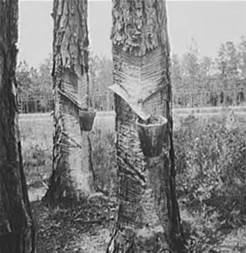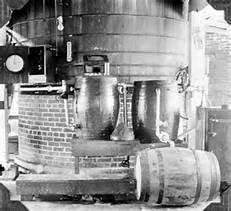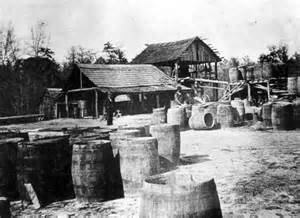- Joined
- Jul 26, 2011
- Messages
- 4,142
GENUINE TURPS is NOT made from ground up stumps or pulp. It is different chemically from REAL turpentine,and smells different. REAL turps has a very sharp smell,while the crud they sell as turps is more oily in nature.
It has to say on the can: FROM THE LIVING TREE to be real turpentine,and the stuff has gotten very hard to find over the years. You CAN get the real turps at art supply stores,but then are going to be paying a premium price for just a few ounces of it.
As Master Musical Instrument Maker in Williamsburg from 1970-1986(Later became Master Instrument and Toolmaker 1986-2009).,I got really into making my own violin varnish,and duplicated MANY old formulae which my director,who had no knowledge of violin making,failed to see the point of. But,I persisted for some years anyway. I even slashed some of my own pine trees to make natural turpentine from experimentally.
Real turpentine will yield TURPENE RESINS if air is bubbled through it for a few weeks. But,this is a VERY smelly operation,and not the best thing to be breathing. The sharp odor of real turps needs to be avoided. Turpene resins was naturally made in the old days,just from the leaky barrels sitting around for many months before being sold. It would get as thick as syrup. Then,you could simmer off the stuff ,leaving hard,crystalline terpene resin in the container. Should OINLY BE DONE OUT DOORS!!!! I had my share of fire balls,so was always careful to keep myself away from the area over the pot. Back in the 60's,when I did not know better,I had a whole gallon of genuine turps get as thick as Karo syrup just because I had punched a small nail hole in the top of the can to aid in pouring.
To pour from a FLAT CAN,pour from the can holding it FLAT,with the nozzle on top to prevent glugging and spillage.
The crud distilled out of stumps will not make terpene resins.
I would NOT want turps on my machinery.
If you just want to thin oil based paint or varnish,PAINT THINNER is a LOT better. It lubricates the brush,while turpentine will instigate drag marks in the surface you are trying to paint SMOOTHLY!!! I got so that I could hand varnish a violin so smoothly,it looked like it was sprayed. Used a 1" ox hair sign painter's brush.
It has to say on the can: FROM THE LIVING TREE to be real turpentine,and the stuff has gotten very hard to find over the years. You CAN get the real turps at art supply stores,but then are going to be paying a premium price for just a few ounces of it.
As Master Musical Instrument Maker in Williamsburg from 1970-1986(Later became Master Instrument and Toolmaker 1986-2009).,I got really into making my own violin varnish,and duplicated MANY old formulae which my director,who had no knowledge of violin making,failed to see the point of. But,I persisted for some years anyway. I even slashed some of my own pine trees to make natural turpentine from experimentally.
Real turpentine will yield TURPENE RESINS if air is bubbled through it for a few weeks. But,this is a VERY smelly operation,and not the best thing to be breathing. The sharp odor of real turps needs to be avoided. Turpene resins was naturally made in the old days,just from the leaky barrels sitting around for many months before being sold. It would get as thick as syrup. Then,you could simmer off the stuff ,leaving hard,crystalline terpene resin in the container. Should OINLY BE DONE OUT DOORS!!!! I had my share of fire balls,so was always careful to keep myself away from the area over the pot. Back in the 60's,when I did not know better,I had a whole gallon of genuine turps get as thick as Karo syrup just because I had punched a small nail hole in the top of the can to aid in pouring.
To pour from a FLAT CAN,pour from the can holding it FLAT,with the nozzle on top to prevent glugging and spillage.
The crud distilled out of stumps will not make terpene resins.
I would NOT want turps on my machinery.
If you just want to thin oil based paint or varnish,PAINT THINNER is a LOT better. It lubricates the brush,while turpentine will instigate drag marks in the surface you are trying to paint SMOOTHLY!!! I got so that I could hand varnish a violin so smoothly,it looked like it was sprayed. Used a 1" ox hair sign painter's brush.
Last edited:




